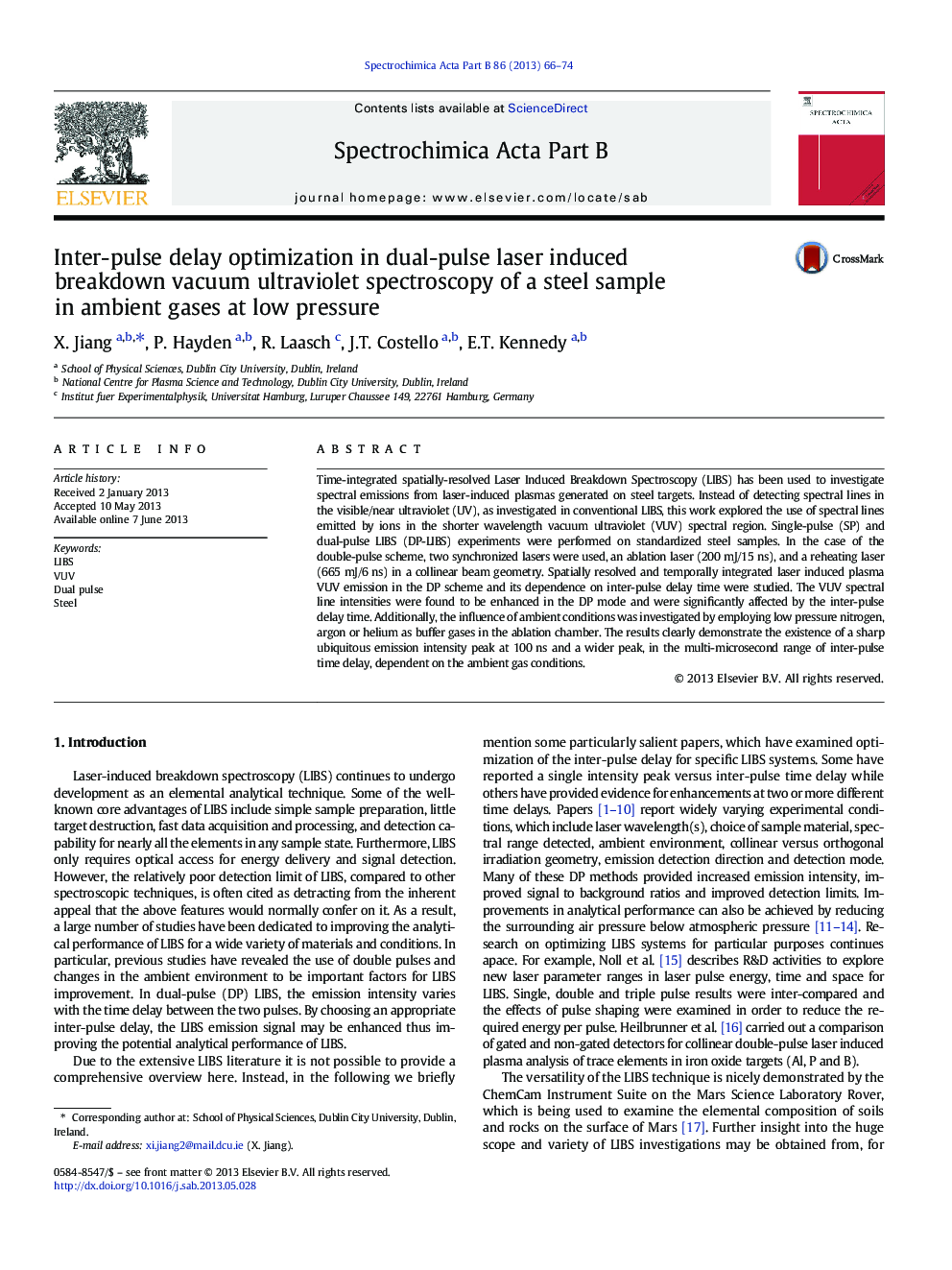| Article ID | Journal | Published Year | Pages | File Type |
|---|---|---|---|---|
| 1239849 | Spectrochimica Acta Part B: Atomic Spectroscopy | 2013 | 9 Pages |
•First dual-pulse and ambient gas deep VUV LIBS plasma emission study•Optimization of inter-pulse delay time for vacuum and ambient gas environments•A sharp intensity peak implies optimal inter-pulse delay of 100 ns for all conditions.•A broad peak appears in the microsecond delay range, but only in ambient gases.•Pressure dependence implies a different enhancement process.
Time-integrated spatially-resolved Laser Induced Breakdown Spectroscopy (LIBS) has been used to investigate spectral emissions from laser-induced plasmas generated on steel targets. Instead of detecting spectral lines in the visible/near ultraviolet (UV), as investigated in conventional LIBS, this work explored the use of spectral lines emitted by ions in the shorter wavelength vacuum ultraviolet (VUV) spectral region. Single-pulse (SP) and dual-pulse LIBS (DP-LIBS) experiments were performed on standardized steel samples. In the case of the double-pulse scheme, two synchronized lasers were used, an ablation laser (200 mJ/15 ns), and a reheating laser (665 mJ/6 ns) in a collinear beam geometry. Spatially resolved and temporally integrated laser induced plasma VUV emission in the DP scheme and its dependence on inter-pulse delay time were studied. The VUV spectral line intensities were found to be enhanced in the DP mode and were significantly affected by the inter-pulse delay time. Additionally, the influence of ambient conditions was investigated by employing low pressure nitrogen, argon or helium as buffer gases in the ablation chamber. The results clearly demonstrate the existence of a sharp ubiquitous emission intensity peak at 100 ns and a wider peak, in the multi-microsecond range of inter-pulse time delay, dependent on the ambient gas conditions.
